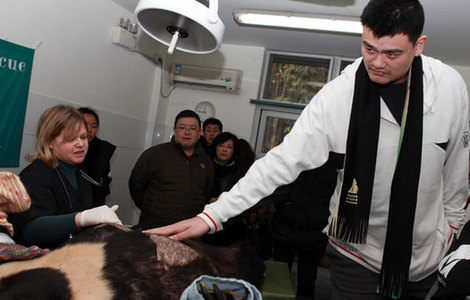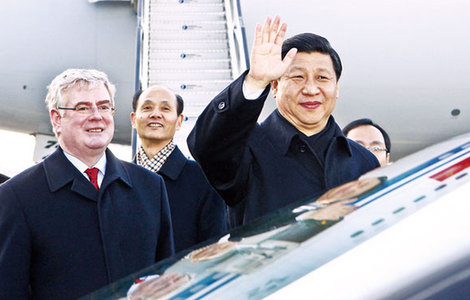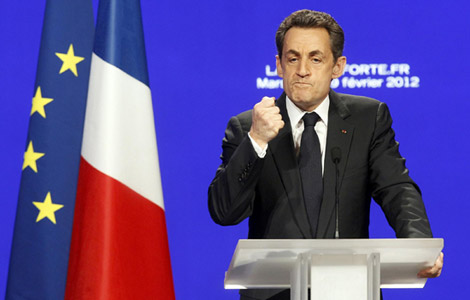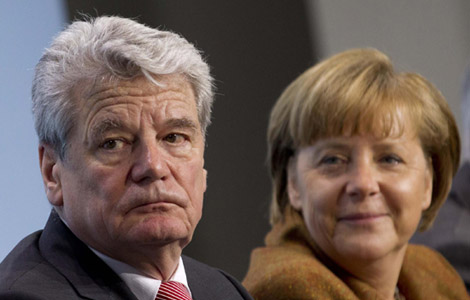Protectionism is not remedy
Updated: 2012-02-17 07:55
By Jin Baisong (China Daily)
|
|||||||||
US should cease accusing China of unfair trading and ease its export restrictions to boost manufacturing and create jobs
To maintain its superpower status, the United States frequently points an accusatory finger at China, the world's second largest economy, and deals with "made-in-China" products in a similar way to the approach it used to take with Japan.
It takes anti-dumping and anti-subsidies measures, while trying to curb imports from China by raising tariffs. It has also pressurized China with the Super 301 provision of the US Trade Act, and continues to call for appreciation of the renminbi. The US has also initiated the creation of a new trade body to probe into China's "unfair trade".
Such trade protectionism is usually of little benefit to the US. For instance, in 2009, higher tariffs were levied on tires imported from China. However, according to a Wall Street Journal report in January, Thailand, Indonesia, and Mexico have now replaced China as the source of tire imports. The protectionist measures failed to help US tire manufacturers, as US labor costs make their products expensive compared to those from developing countries.
The tariffs did nothing to help boost US employment, instead they dealt a heavy blow to the many small firms that used to import tires from China.
It's absurd for the US government to blame others instead of trying to revive its own economy. As former chairman of the US Federal Reserve Board, Alan Greenspan, has observed, the quantitative easing policy has failed to boost investment because US enterprises do not make long-term investments as interest rates are so unpredictable.
Besides, in contrast to Germany, which cut salaries and welfare payments to stay competitive following the onset of the global economic slowdown, US employees retained their high salaries, especially in the financial sector, which did nothing to fix the defects in the US industrial structure and seriously curbed the recovery of its manufacturing industry.
For example, Apple's iPhone is jointly made in the US, Japan, China, and other countries, but the lion's share of the profits go to the US, the assembly enterprises in China make only 2-3 percent profit. But in the manufacturing chain, such labor-intensive work naturally creates more jobs in China than in the US.
In order to ease the trade imbalance, the US should clearly recognize its structural defects and implement short-term economic resurgence policies. Although restraining China's development is one option for maintaining the US' global dominance, such a strategy is difficult to realize, and may push relations between the US and China to a dangerous point.
If the US chooses instead to strengthen its cooperation with China and ease its export controls it will definitely boost its exports. China is now the world's second largest economy, and is still one of the most rapidly growing economies. China is also the most rapidly growing destination for US exports. According to statistics from China's General Administration of Customs, in 2011 imports from the US totaled $122 billion.
China badly needs US high-tech products for its economic development. But regrettably, the US' Cold War mentality has resulted in it imposing export controls on 2,000 types of high-tech products and prohibiting their export to China. If Washington lifts the ban, it is expected that China will double its imports from the US. In the long run, expanding exports to China will encourage US enterprises to invest in domestic manufacturing addressing the economic structural deficiency and the heavy debt burden facing the US.
The author is deputy director of the department of Chinese trade studies at the Chinese Academy of International Trade and Economic Cooperation, affiliated to the Ministry of Commerce.
(China Daily 02/17/2012 page8)
Hot Topics
Wu Ying, iPad, Jeremy Lin, Valentine's Day, Real Name, Whitney Houston, Syria,Iranian issue, Sanyan tourism, Giving birth in Hong Kong, Cadmium spill, housing policy
Editor's Picks

|

|

|

|

|

|







